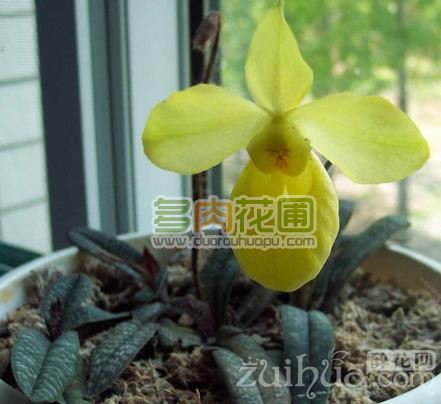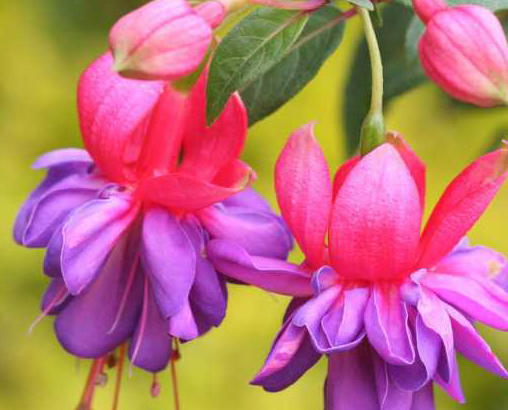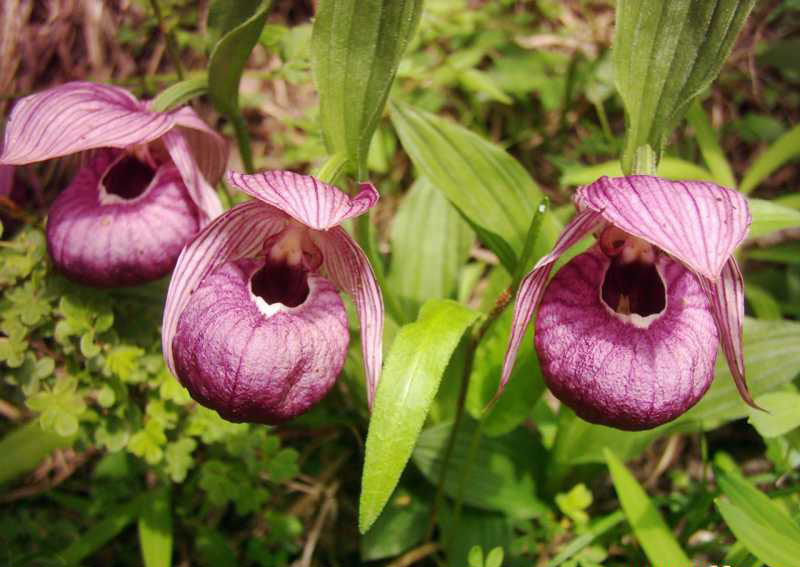What are the main points of daily maintenance of domestic Paphiopedilum?
Potted Paphiopedilum, such as terrestrial orchid, should choose rotten leaf soil, peat soil, moss, bark blocks and so on as planting materials, and the pot bottom should be covered with broken bricks and charcoal blocks accounting for about 1 inch of the flowerpot capacity, so as to facilitate drainage and ventilation. If it is epiphytic orchid, it is appropriate to use moss and fern root as planting material, soak it with water before use, and squeeze the excess water dry before use. If the plant material used is dry, it is difficult to soak through after planting, affecting the growth of new seedlings.
Paphiopedilum can be placed in a bright place indoors all the year round, and should be placed about 80 centimeters away from the sunny windowsill in winter to avoid direct sunlight. If it is exposed to strong light in summer, it can easily lead to sunburn, yellow leaves and even the death of the whole plant, but excessive shading also affects flowering. Be sure to pay attention to ventilation when you put it indoors in summer, otherwise it is prone to soft rot. Because there is no false bulb in Paphiopedilum, drought resistance is weak. In cultivation, it is necessary to keep the cultivation materials moist and indoor high humidity. For this reason, in the dry and early season, it is often necessary to drink around the flowerpot and spray to the leaves at the same time to increase the air humidity.
Appropriate amount of water should be watered in spring, summer and autumn, and it is appropriate to keep the plant in the basin slightly wet and avoid stagnant water. Most of the plants are semi-dormant 2-3 months before flowering. At this time, watering should be properly controlled to make the plant in the basin in a semi-dry and semi-wet state, which is beneficial to flower bud differentiation. After the new buds germinated in the growing season, thin cake fertilizer could be applied once every 3 to 4 weeks or a small amount of granular flower fertilizer should be applied around the edge of the basin every 2 months. Stop fertilizing during dormancy. Most of Paphiopedilum have poor cold resistance, so the lowest temperature for overwintering should not be lower than 10 degrees Celsius, and the minimum temperature should be kept at 12-15 degrees Celsius, which can blossom normally. If the overwintering temperature is higher than 20 degrees Celsius, the plant growth is too exuberant, and the leaves are hypertrophic and drooping, which will also affect normal flowering.

Apricot Magnolia gets its name because of its apricot-yellow flowers, commonly known as "Golden Dull". It is native to Bijiang in Yunnan Province and grows on the cliff. It was first collected by Chinese botanist Zhang Aoluo in 1979 and named by Liu Xinqi and Liu Fangyuan in 1982. The plant has a very short stem, leaf blade leathery, subbasal, elongated, dark green to grayish green on the surface, lavender on the back, and light green spots on both sides. The flower is apricot yellow, without any miscellaneous colors, looks very pure, the lip is an oval pocket, and the tip edge of the pocket is very narrow. In spring, a single flower can bloom for 20-30 days.
Aristolochia hardleaf gets its name because of its hard leaves, and it is also called "silver pocket" because its flower color is light pink or white, which is distributed in southern Yunnan. Aristolochia hardleaf is a new species discovered by Chinese botanists Tang Jin and Wang Fazan in 1951, because the type specimen at that time was a plant that had not yet flowered, so it was named "Aristolochia", but in fact its flower was not small. In 1982, Liu Xinqi and Liu Fangyuan were named "Aristolochia hardleaf". Its plant is similar to apricot yellow orchid, but slightly smaller and the leaves are hard. The flower is single, the stem is long and strong, the flower is very large when open, the flower color is pink or nearly white. Flowering in early spring, each flower can bloom for 2-3 weeks.
Family maintenance
Apricot Magnolia and Paphiopedilum are perennial herbs of Orchidaceae with similar habits. Like the warm, humid semi-shady environment, the northern areas are often planted with loose, breathable, well-drained rotten leaf soil or peat soil, and fill the basin floor with tiles, bricks, ceramsite and other granular materials to facilitate drainage and ventilation. In the south, it is cultivated with materials such as moss, fern root, bark and so on. Usually put in bright light and no direct sunlight maintenance, if the light is too strong, it will cause slow plant growth, short, leaf sunburn, or even death of the whole plant; and too shady, although the leaves grow very well, but it will reduce flowering or non-flowering. In addition to keeping the basin soil moist, it is also necessary to spray water to the plants to increase air humidity. Watering should be controlled 2-3 months before flowering to facilitate the formation of flower buds.
Except for the dormant period in winter and after anthesis, apply mature thin liquid fertilizer every 10 days, and be careful not to splash on the leaves so as not to cause rot. Keep it in a cool and ventilated place in summer to prevent plant decay caused by muggy heat and humidity. If the night temperature is kept above 10 ℃ in winter, the temperature in daytime should be 5 ℃ ~ 10 ℃ higher than that at night.
The above is the introduction of the maintenance knowledge of orchid plants provided by the succulent garden. I hope you can get something after reading this article!
- Prev

What conditions do you need to meet for more flowers in the upside down bell?
The bell is hung upside down and the name is Begonia. It is a perennial evergreen shrub. Racemes or panicles, flowers pendulous, sepals red, corolla purple, rose red or white, female and stamens protruding beyond flowers
- Next

What are the common cultivated varieties of Paphiopedilum
Dolan is known as slipper orchid. The flower shape is peculiar, each petal has stripes or spots, and the lip petals vary in the shape of a round pocket, similar to the front end of slippers, hence the name. Most of them are terrestrial orchids and a few are epiphytic orchids. Paphiopedilum is rich in color, has a long flower life, and has four seasons of flowering species. There are more than 10 species of Paphiopedilum in China.
Related
- Fuxing push coffee new agricultural production and marketing class: lack of small-scale processing plants
- Jujube rice field leisure farm deep ploughing Yilan for five years to create a space for organic food and play
- Nongyu Farm-A trial of organic papaya for brave women with advanced technology
- Four points for attention in the prevention and control of diseases and insect pests of edible fungi
- How to add nutrient solution to Edible Fungi
- Is there any good way to control edible fungus mites?
- Open Inoculation Technology of Edible Fungi
- Is there any clever way to use fertilizer for edible fungus in winter?
- What agents are used to kill the pathogens of edible fungi in the mushroom shed?
- Rapid drying of Edible Fungi

